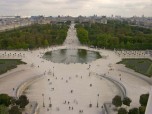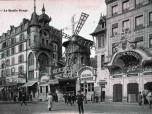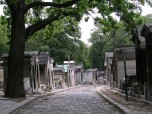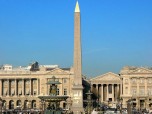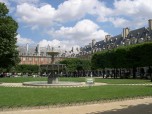The Conciergerie is located in the western portion of Île de la Cité, which is an island on the Seine river. The Conciergerie is near the iconic Cathedral of Notre-Dame. It was a former royal palace called Merovingian which was later converted to a prison. This structure is just a part of Palais de Justice, which is still in use today for certain judicial purposes. It is recorded that thousands of prisoners who were captured and detained during the French Revolution were kept in the Conciergerie and later executed by means of guillotine.
Early History
The Conciergerie was built during the 14th century and is an example of early Gothic architecture. The building is complete with its own kitchen, men-at-arms quarters and guard rooms. The structure was constructed by the order of Louis IX and Philip IV. The architects commissioned to complete the work were Nicolas des Chaumes and Jean de Saint-Germer.
The Middle Ages
Louis IX was responsible for the construction of the Sainte-Chapelle as well as the associated galleries. Philip IV built the magnificent towers which give a good view of the river. This structure was a fine example of both religious and secular French architecture as well as royal style. The Grande Salle, or the great hall, is one of the largest halls of its time. One floor under the Grand Salle, is the La Salle des Gens d’Armes, which was used as a dining hall and for legal hearings. The kings throughout the 14th Century aimed to continually improve the palace and make it grander. However, it was abandoned by Charles V who wanted to move across the river to the Louvre during the 1358. For some time, the palace still continued to be used for administrative purposes until the end of the 1300s.
Prison
The Merovingian palace later was converted into a prison during the 1391. The incarcerated were a mix of political prisoners and common criminals. The prisoners were treated according to their wealth. Those of high power and ranking received their own prison cells with good furniture. The less fortunate prisoners and common criminals were left with a cell that is unfurnished. They would sleep on a sack of hay and lived under very unsanitary conditions. These prisoners would often die because of illnesses, such as the plague, developed from the less than ideal conditions.
The Reign of Terror
The event which was known as the “Reign of Terror” lasted for about ten months during the end of the 1700s. This event played a significant role in French history. An act was ordered that declared that anyone who was considered an enemy to the French republic was guilty of treason and would be sentenced to death. Over 40,000 people were executed or left to die in the Conciergerie. Famous prisoners during this time included Marie Antoinette and Georges Danton. The prison cell of Marie Antoinette was later converted to a chapel and dedicated to honor her. The palace was decommissioned in the 1914 and was opened to the public. The structure was also declared a national monument.















